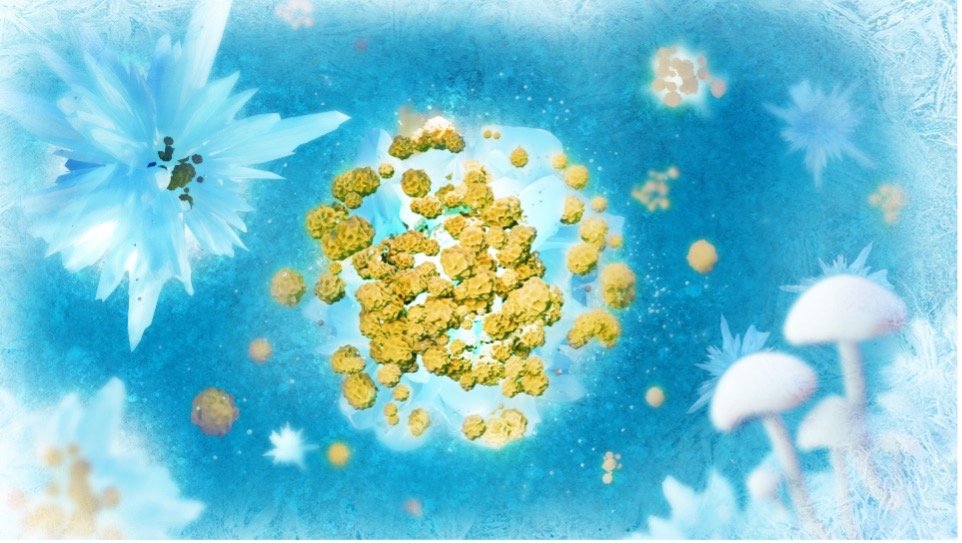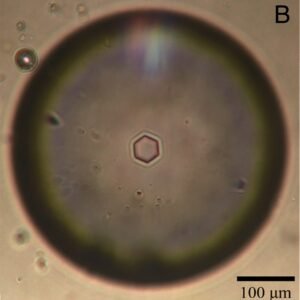Nature’s Ice Sculptors Of How Fungal Proteins Redefine the Freezing Process
The formation of ice, a process often taken for granted, is proving to be more fascinating than we imagined. In a ground breaking collaboration between the University of Utah, Germany’s Max Planck Institute for Polymer Research, and Boise State University in Idaho, a new study is shedding light on the role of biological agents, particularly proteins produced by fungi, in the complex ballet of ice crystallization.

Contrary to what we learned in school, the freezing point of water isn’t always a fixed 0 degrees Celsius (32 degrees F). This fundamental physical process, essential in nature, is still somewhat shrouded in mystery despite decades of scientific scrutiny. Thanks to this research, we’re gaining fresh insights into the world of ice formation and its connection to biological elements.

Pure water won’t freeze until it cools to as low as -46 C, thanks to the energy barrier inherent in phase transitions. This is because water molecules need particles as a foundation for the crystals that lead to ice, a process known as nucleation. Surprisingly, the most efficient ice-nucleating particles are biological in origin, originating from bacteria, fungi, and even insects.
Valeria Molinero, a theoretical chemist at the University of Utah’s College of Science, is at the forefront of unraveling this mystery. Her recent study, co-led with an international team of researchers, explores the characteristics and properties of fungal ice nucleators. These proteins, excreted into the environment, play a significant role in both promoting and inhibiting ice growth.

According to Molinero, these proteins are “extremely effective for ice nucleation,” but the exact benefits to the organism remain unclear. The research focused on a specific fungus, Fusarium acuminatum, revealing that it produces ultra-minute proteins that aggregate into larger particles. This discovery, published in the Proceedings of the National Academy of Sciences (PNAS), challenges preconceived notions about the size and efficiency of fungal proteins compared to their counterparts in other organisms.
What makes this study even more intriguing is the broader implications of its findings. Bacteria and fungal proteins have the remarkable ability to spur ice formation at temperatures as warm as -10 to -2 degrees. Some bacteria are so effective at promoting ice that they find applications in products used for snowmaking in ski areas.
The evolutionary aspect adds another layer to the narrative. Various organisms, from insects to lichen, have independently evolved similar ice-nucleating capabilities. Molinero emphasizes that “all of the ice nucleation in nature that is extremely effective seems to be done by proteins,” highlighting a commonality that spans different kingdoms.

The ecological advantages of ice nucleation, along with its role in cloud formation and precipitation, are still not fully understood. This gap in our understanding underscores the complex interplay between climate and life. Practical applications of this research extend to improving the efficiency of food-freezing processes, snowmaking, and cloud seeding, presenting opportunities for advancements in various industries.
FOR MORE SCIENTIFIC ARTICLES Improving Renal Function,The Impact of Axillary Mechanical Circulatory Support
However, with these exciting discoveries come equally intriguing questions. Why and how do these proteins aggregate? Are they intentionally performing this function, or is it a byproduct of another purpose? Addressing these fundamental questions requires collaborative efforts, bringing together experts in chemistry, biophysics, and biology.

In conclusion, this study, titled “Functional aggregation of cell-free proteins enables fungal ice formation,” offers a glimpse into the intricate world of ice formation, challenging conventional wisdom and opening doors to a deeper understanding of the relationship between life and climate. Published on November 9 in PNAS, the research was made possible through grants from the National Science Foundation, the National Institutes of Health, and the U.S. Air Force Office of Scientific Research. Valeria Molinero, the Jack and Peg Simons Endowed Professor of Theoretical Chemistry, led the research, with Ingrid de Almeida Ribeiro, a postdoctoral researcher in the Molinero lab, serving as the co-first author
1 Comment